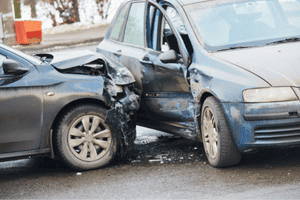
So many thoughts fly through your mind in the crucial moments after a car crash. Most likely, you focus your thoughts on injured drivers, passengers, or your own health. Your thoughts may seem confused, fuzzy on the details, and unsure of the next steps to take. Worries about your car accident claim, permanent disability, costly medical treatments, surgery and medicines all crowd out the minute details of the crash itself.
Meanwhile, if you’re lucky and the other driver has vehicle insurance, their insurance company will want to know your side of the story. That’s true for your insurance company, too, and the police that investigates the accident.
If you or a loved one sustained injuries in a car crash caused by another driver, you deserve to receive compensation for those injuries, for your medical expenses, lost wages, pain and suffering, as well as court cases and attorneys’ fees. You can take important steps to make sure that you get the most money out of any car accident claim. The following are five steps to guide you as you slow walk through the next moments of your life.
Step #1: Remain at the Accident Location
In any accident that includes personal injuries, the drivers and passengers should remain at the accident location. You should notify the police that the accident resulted in personal injuries, so they can come to investigate and provide appropriate medical transport. In many states, there is a legal obligation to stay on site of the accident until the police arrive.
Step #2: Collect Driver Information, Passenger Details, and Witness Contact Information
While you wait for the police to arrive, there are preliminary tasks you can do that will help you prepare your case later on. If you are not mobile following the accident, try to have one of your passengers collect the following information for you:
- Driver’s name and contact information, including address, phone number, email;
- If the other car carried passengers, obtain their contact information;
- Vehicle information for the other cars involved; and
- Collect potential witnesses’ contact information.
Insurance companies value cell phone photos of accidents taken immediately following a crash. Photos always help case preparation. Accident investigators who have photographic evidence from various visual perspectives are ahead of the game. Such visual evidence prevents inaccuracies in the police record.
Remember, too, that you are collecting information, not admitting fault, or discussing details about the crash. As Sgt. Joe Friday often said, “just the facts ma’am.”
And Stay Off Social Media. You don’t want your claim litigated in words or pictures you’ll regret later. In fact, do not talk to others about your accident. Talk only to your insurance company or your legal representative.
Step #3: Exchange Insurance Company Details and Contact Your Insurer
One of the first things student drivers learn is the importance of exchanging insurance company details following an accident. This is especially true when the accident involves personal injuries. Personal injuries immediately raise the stakes in terms of compensation for damages from the accident.
In states with uninsured motorist (UM) protection or personal injury protection (PIP) laws, it is just as important to verify that the other driver does not have coverage with an insurance company. This will alert your insurance company to begin the process for compensation under your own UM or PIP policy provisions.
Once you have collected all the insurance details and contact information for passengers, drivers, witnesses, etc., then it’s time to call your insurance company to alert them about the crash. This report is necessary even if you do not believe you were at fault. It gives your insurer the heads-up that they may have to represent you with respect to the accident.
Step #4: Get Medical Attention, Save Expenses, Keep a Recovery Journal
Once the police come and the ambulance arrives, it’s time to get professional medical attention from the nearest hospital or medical facility. Even if you can walk away, take the ambulance ride to the hospital. Trained medical staff will document your injuries, provide appropriate treatment, and record the prognosis for your situation.
This is an important step because getting the most money for your personal injury damages means providing evidence of those injuries. Save all these;
- Doctor bills,
- Hospital bills,
- Prescription drug charges,
- Ambulance bills, and
- Any physical therapy expenses. You will need all this documentation to support your insurance claim or your court case for damages.
Further, don’t stop going to the doctor just because you feel better. Some injuries take longer than others to show up and to completely heal. Follow through on the doctor’s advice for treatment.
Furthermore, one of the best ways to show evidence for pain and suffering damages is to show the effect that your injuries had on your personal life, ability to work, and the emotional toll on you and your family. Your recovery journal can impact your claim in a big, monetary way.
Step #5: Hire an Experienced Personal Injury Attorney
When it comes to legal representation, you want to select a car accident attorney with experience in pursuing car accident claims. Once you make your selection,
- You should follow the attorney’s advice,
- Don’t talk to anyone without checking with your attorney first, and
- Above all, never discuss case settlement with the opposing insurance company or opposing counsel.
Let your attorney handle these sensitive claim issues for you. It’s the best way to get the most money out of your car accident claim.